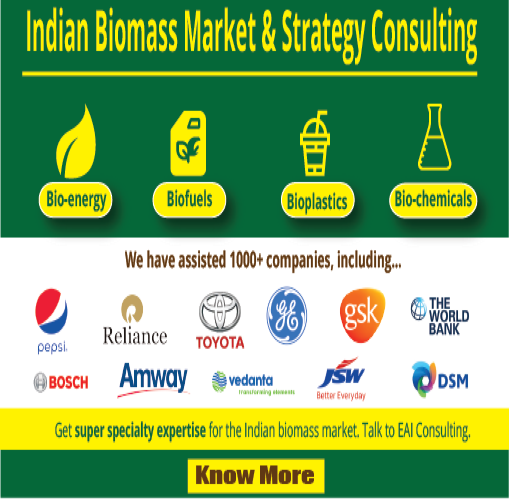Theoretically, Biodiesel produced from algae appears to be the only feasible solution today for replacing petro-diesel completely. No other feedstock has the Oil Yield high enough for it to be in a position to produce such large volumes of oil. To elaborate, it has been calculated that in order for a crop such as soybean or palm to yield enough oil capable of replacing petro-diesel completely, a very large percentage of the current land available needs to be utilized only for biodiesel crop production, which is quite infeasible. For some small countries, in fact it implies that all land available in the country be dedicated to biodiesel crop production. However,
if the feedstock were to be algae, owing to its very high yield of oil per Acre of cultivation, it has been found that about 10 million acres of land would need to be used for biodiesel cultivation in the US in order to produce biodiesel to replace all the petrodiesel used currently in that country. This is just 1% of the total land used today for farming and grazing together in the US (about 1 billion acres). Clearly, algae are a superior alternative as a feedstock for large-scale biodiesel production.In practice however, biodiesel has not yet been
produced on a wide scale from algae, though large scale algae cultivation and
biodiesel production appear likely in the near future (4-5 years).
In order to produce biodiesel from algae on a large-scale,
the following conditions need to be met, logically speaking:
- Ability to sustainably produce high-oil-yielding algae strains on a large-scale
- Ability to extract the oil from the algae on a large scale
- Capability for large-scale conversion of algal oil into
biodiesel
The first two aspects are specific to algae, while the
third is a generic aspect for biodiesel production from all plant oils.
Based on the current research inputs, it appears that the
real concern would be condition # 1: Capability to sustainably produce
high-oil-yielding algae strains on a large-scale. While the other two
conditions need to be addressed as well, those two are primarily engineering
considerations over which we have more control than over condition #1. This,
hence needs to be given more focus.
The capability to sustainably produce high-oil-yielding algae strains on a large-scale can again be thought to contain two distinct aspects: (1) Identifying the high-yielding Algal Strains and (2) Identifying the most optimal methods to cultivate them. A good amount of research is taking place in each of these two aspects and it is hoped that there will be more good news soon.
More articles & news on large-scale algal fuel
production: Visitors may kindly have a look at the Oilgae Blog Directory for
relevant blog articles.
See also:
Widescale Biodiesel Production from Algae – Michael Briggs, University of New Hampshire
Large-scale Algae Culture Systems
Large-scale Algal Turf Scrubber (PDF)
Algae Culture – from
Wikipedia
Other Related Sections
Blue
Green Algae, Red Algae,
Green
Algae, Marine
Algae, String
Algae, Pond
Algae, Pond
Algae Control, Algae Control



